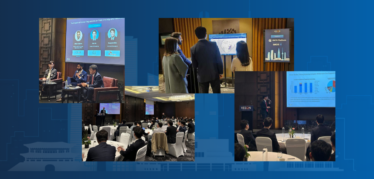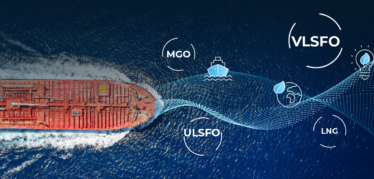With new regulations developing every year, maritime shipping stakeholders on all sides of the contract are challenged to incorporate regulatory considerations into their operations to remain compliant. In fact, many maritime shipping professionals cite regulatory complexity as a top operational challenge. Navigating the evolving impact of maritime regulations requires a nimble and systematized approach to maritime operations.
To understand how to factor regulatory requirements into your commercial operations, let’s look at the three major types of maritime regulations, how they can impact your organization, and the role of technology in providing a practical, optimized approach to compliance.
We hosted a panel of maritime professionals to discuss managing regulatory complexity. Listen to the full discussion by downloading the on-demand webinar recording or read about it in this recap post.
The Three Major Types of Maritime Regulations
Maritime regulations tend to fall into three main buckets, each of which can be addressed in your daily workflows in a practical, data-driven way:
- Environmental regulations
Of these three regulatory categories, environmental regulations are perhaps the most significantly evolving in maritime shipping. The International Maritime Organization’s (IMO’s) implementation of CII ratings and the addition of maritime in EU ETS are a few specific examples of emerging environmental regulations. To address these regulations in your daily workflows, maritime organizations require decision support that includes emissions-related criteria , risk management that includes carbon exposure, integrated reporting, and adaptive technology that can evolve alongside regulations.
- Geopolitical regulations
In today’s ever-changing geopolitical landscape, the global maritime shipping ecosystem must carefully consider sanctions and other geopolitical regulations. Failing to do so could cause damage to counterparty relationships and profitability. Proactively addressing sanctions in decision-making means managing crew information at scale and configuring your commercial solution to alert users about sanctions where relevant. Geofencing is another powerful tool for geopolitical oversight, which accurately tracks and alerts appropriate stakeholders when a vessel enters or leaves a pre-determined area.
- Safety regulations
Another set of regulations that must be upheld by maritime organizations are those set by the Maritime Safety Committee (MSC), which oversees the IMO in requirements related to the safety of maritime vessels, vessel routes, hazardous cargoes, and more. Maintaining vessel compliance throughout the voyage lifecycle requires diligence and visibility. Some examples include carefully managing tanker certificate information, considering prior cargoes in chemical voyage planning, and making safety information accessible across workflows.
The Impact of Regulations on Commercial Outcomes
Some facets of maritime regulations have an impact on financial outcomes that are direct and easy to understand. Violated sanctions, for example, can result in outsized fines. Poor safety standards can also result in costly penalties, as well as safety incidents that can harm vessels, cargoes, crew members, and the environment. But for some new maritime regulations, such as those that address maritime emissions, the commercial impact is more complex. For example, the addition of maritime shipping to the EU ETS fundamentally alters the way maritime exposure is measured, offset, and managed. This has a sweeping impact on commercial decisions at every stage of the voyage lifecycle.
“We decided to emphasize getting constantly prepared and ready for future changes. It is clear to us that one major change is related to CO2 emissions. When the provision of CO2 emissions data is required by the charterers, we will need our organization to be equipped to reply speedily.”
Yutaka Kobayashi, Section Manager of Maritime Platform Promotion Department at NYK Business Systems
(Read more from this NYK Line interview )
–
Additionally, the long-term operational impact of many new maritime regulations is still evolving. In many cases, compliance represents an extra step in the process, but in other cases, it requires a new process altogether. For example, CII data must now be maintained for every vessel. The consideration of CII impact has significant operational implications, and requires organizations to operate all of their vessels across all of their voyages more efficiently.
To address these evolving complexities, many maritime organizations are beginning to proactively incorporate changes into their daily operations. To support this, they are leveraging technology that can integrate regulatory needs into their current workflows in a practical way.
“I think all the [discussion] about the new fuel types is super fascinating, but… it’s going to take a few years before we get there. What’s on our agenda is really efficiency and [emissions] reduction through the technological means we have available today. We are really putting all efforts into reducing here and now.”
Lars Mathiasen, Head of Commercial Decarbonization and Head of Bunkers at TORM
(Hear the full conversation in this Managing Regulatory complexity panel webinar recording)
–
As organizations are challenged to stay on top of changing regulations, new needs are emerging that require adapted or entirely new ways of working. As with most changes of this scale, it’s easier said than done. Let’s look at how you can use technology to help.
Proactively Addressing Regulatory Changes with VIP
As a commercial maritime freight management platform, the Veson IMOS Platform (VIP) supports our clients as they integrate timely regulations into their contract management workflows. From maritime emissions regulations to geopolitical sanctions and vessel safety requirements, VIP simplifies regulatory complexity through robust decision support, integrated reporting, a compliant contract management workflow, and a suite of complementary solutions.
With VIP you can:
- Make informed, compliant, and sustainable decisions in a timely manner through contextual decision support.
- Establish a single source of truth across stakeholders and workflows with accurate and timely information on vessels, bunkers, and voyages.
- Integrate with other solutions specializing in the environmental, geopolitical, and safety-related aspects of the regulatory landscape.
- Leverage pre-built and custom reporting capabilities to share with key decision-makers and regulators alike.
Interested in learning more about tackling regulatory challenges with Veson? Visit this page to read more or contact us to connect with a maritime shipping expert.



 Giftson Eliyesar
Giftson Eliyesar
 Hongbeom Park
Hongbeom Park
 Oliver Kirkham
Oliver Kirkham